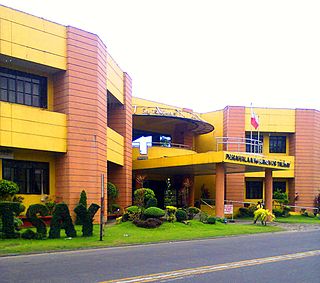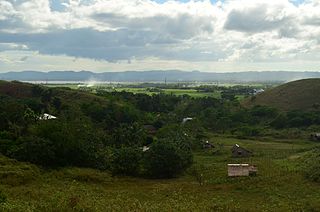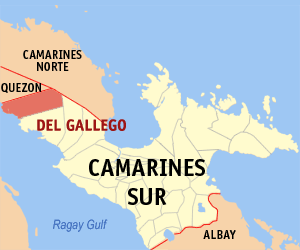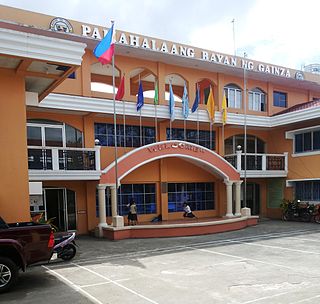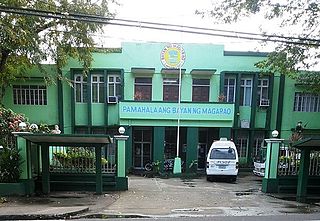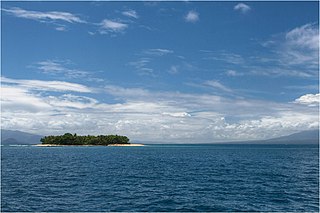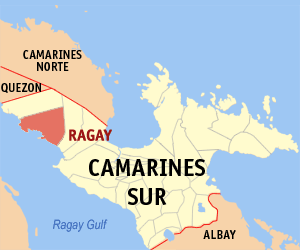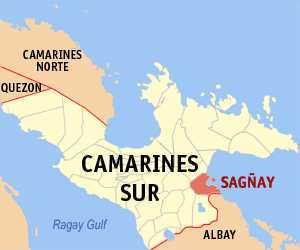Lagonoy | |
|---|---|
| Municipality of Lagonoy | |
 | |
| Nickname(s): The True Heart of Partido | |
| Motto(s): Dagos Ang Pagasenso | |
 Map of Camarines Sur with Lagonoy highlighted | |
Location within the Philippines | |
| Coordinates: 13°44′N123°31′E / 13.73°N 123.52°E Coordinates: 13°44′N123°31′E / 13.73°N 123.52°E | |
| Country | |
| Region | Bicol Region (Region V) |
| Province | Camarines Sur |
| District | 4th district |
| Founded | 1763 |
| Barangays | 38 (see Barangays) |
| Government | |
| • Type | Sangguniang Bayan |
| • Mayor | Delfin "JB" F. Pilapil III |
| • Vice Mayor | Jerry Jake R. Remoto |
| • Congressman | Arnulf Bryan B. Fuentebella |
| • Electorate | 37,537 voters (2019) |
| Area | |
| • Total | 377.90 km2 (145.91 sq mi) |
| Population (2015 census) [3] | |
| • Total | 55,465 |
| • Density | 150/km2 (380/sq mi) |
| Time zone | UTC+8 (PST) |
| ZIP code | 4425 |
| PSGC | |
| IDD : area code | +63 (0)54 |
| Climate type | tropical rainforest climate |
| Income class | 2nd municipal income class |
| Revenue (₱) | 143.8 million (2016) |
| Poverty incidence | 37.56 (2012) [4] |
| Native languages | Central Bikol Tagalog |
Lagonoy, officially the Municipality of Lagonoy, is a 2nd class municipality in the province of Camarines Sur, Philippines. According to the 2015 census, it has a population of 55,465 people. [3]

Camarines Sur is a province located in the Bicol Region in Luzon of the Philippines. Its capital is Pili and the province borders Camarines Norte and Quezon to the northwest, and Albay to the south. To the east lies the island province of Catanduanes across the Maqueda Channel.

The Philippines, officially the Republic of the Philippines, is an archipelagic country in Southeast Asia. Situated in the western Pacific Ocean, it consists of about 7,641 islands that are categorized broadly under three main geographical divisions from north to south: Luzon, Visayas and Mindanao. The capital city of the Philippines is Manila and the most populous city is Quezon City, both part of Metro Manila. Bounded by the South China Sea on the west, the Philippine Sea on the east and the Celebes Sea on the southwest, the Philippines shares maritime borders with Taiwan to the north, Japan to the northeast, Vietnam to the west, Palau to the east, and Malaysia and Indonesia to the south.







